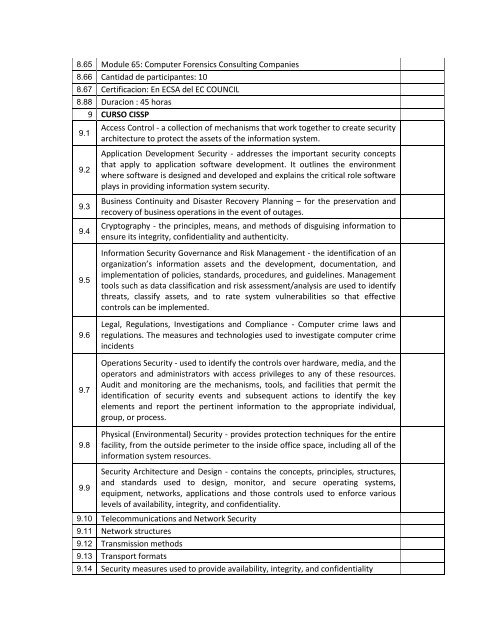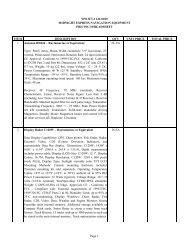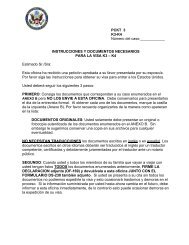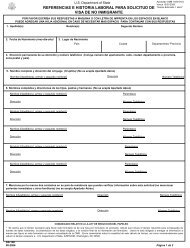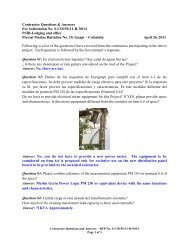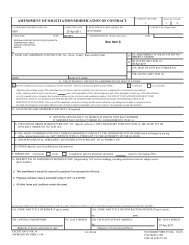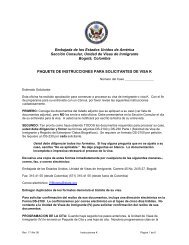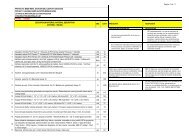EMBAJADA DE LOS ESTADOS UNIDOS DE AMERICA Bogota ...
EMBAJADA DE LOS ESTADOS UNIDOS DE AMERICA Bogota ...
EMBAJADA DE LOS ESTADOS UNIDOS DE AMERICA Bogota ...
You also want an ePaper? Increase the reach of your titles
YUMPU automatically turns print PDFs into web optimized ePapers that Google loves.
8.65 Module 65: Computer Forensics Consulting Companies<br />
8.66 Cantidad de participantes: 10<br />
8.67 Certificacion: En ECSA del EC COUNCIL<br />
8.88 Duracion : 45 horas<br />
9 CURSO CISSP<br />
9.1<br />
9.2<br />
9.3<br />
9.4<br />
9.5<br />
9.6<br />
9.7<br />
9.8<br />
9.9<br />
Access Control - a collection of mechanisms that work together to create security<br />
architecture to protect the assets of the information system.<br />
Application Development Security - addresses the important security concepts<br />
that apply to application software development. It outlines the environment<br />
where software is designed and developed and explains the critical role software<br />
plays in providing information system security.<br />
Business Continuity and Disaster Recovery Planning – for the preservation and<br />
recovery of business operations in the event of outages.<br />
Cryptography - the principles, means, and methods of disguising information to<br />
ensure its integrity, confidentiality and authenticity.<br />
Information Security Governance and Risk Management - the identification of an<br />
organization’s information assets and the development, documentation, and<br />
implementation of policies, standards, procedures, and guidelines. Management<br />
tools such as data classification and risk assessment/analysis are used to identify<br />
threats, classify assets, and to rate system vulnerabilities so that effective<br />
controls can be implemented.<br />
Legal, Regulations, Investigations and Compliance - Computer crime laws and<br />
regulations. The measures and technologies used to investigate computer crime<br />
incidents<br />
Operations Security - used to identify the controls over hardware, media, and the<br />
operators and administrators with access privileges to any of these resources.<br />
Audit and monitoring are the mechanisms, tools, and facilities that permit the<br />
identification of security events and subsequent actions to identify the key<br />
elements and report the pertinent information to the appropriate individual,<br />
group, or process.<br />
Physical (Environmental) Security - provides protection techniques for the entire<br />
facility, from the outside perimeter to the inside office space, including all of the<br />
information system resources.<br />
Security Architecture and Design - contains the concepts, principles, structures,<br />
and standards used to design, monitor, and secure operating systems,<br />
equipment, networks, applications and those controls used to enforce various<br />
levels of availability, integrity, and confidentiality.<br />
9.10 Telecommunications and Network Security<br />
9.11 Network structures<br />
9.12 Transmission methods<br />
9.13 Transport formats<br />
9.14 Security measures used to provide availability, integrity, and confidentiality


